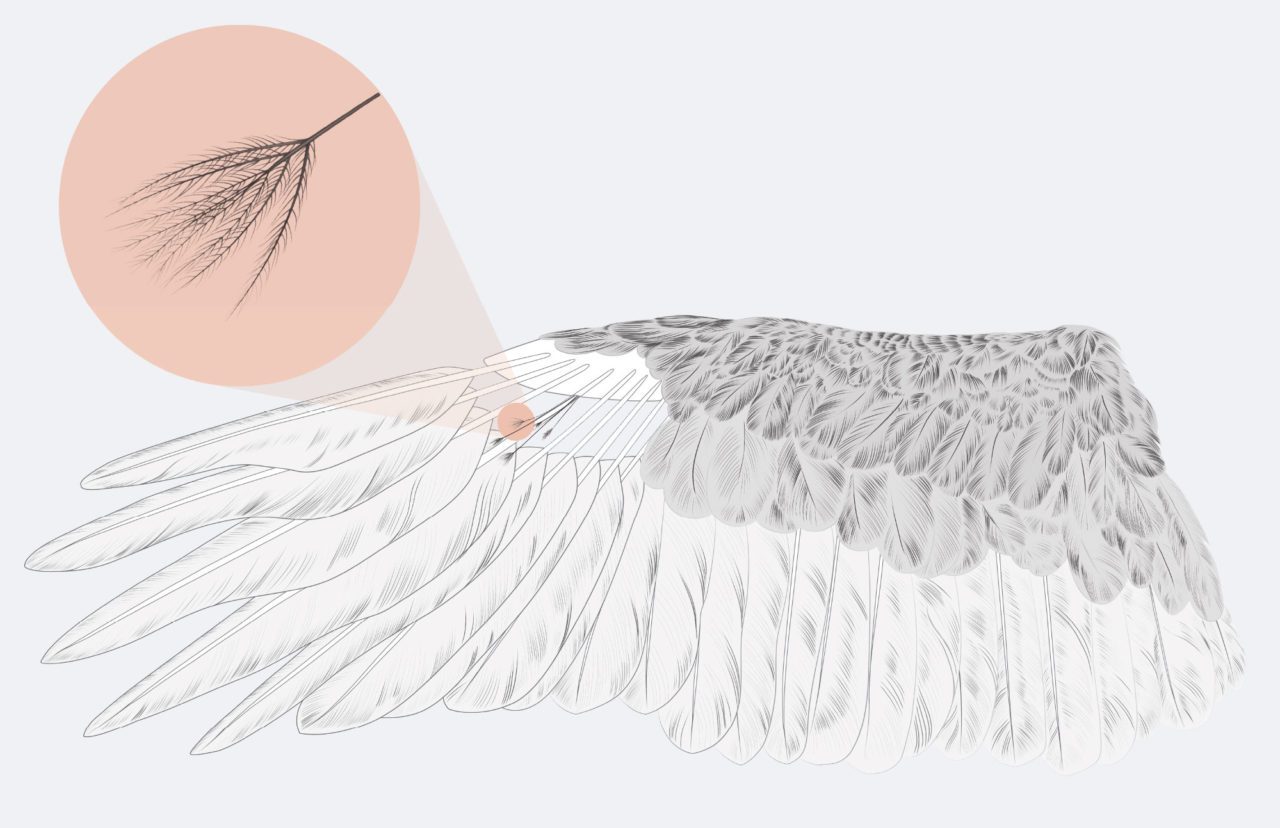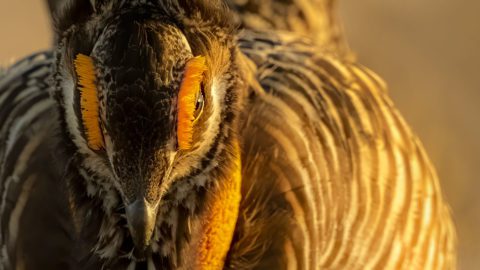The Most Mysterious Feather: Filoplumes
By Marc Devokaitis; Illustrations by Bartels Science Illustrator Jen Lobo
March 31, 2020
From the Spring 2020 issue of Living Bird magazine. Subscribe now.
A bird’s feathers have no nerve endings, so birds can’t necessarily feel when a feather is damaged or compromised—even if the bird’s survival depends on replacing it. And that may be where filoplumes come in.
Feathers are made of keratins, variations of the proteins that form fingernails and hair. Filoplumes are a type of tiny feather that looks vaguely like Beaker the Muppet—an unkempt tuft atop a narrow bristle-like shaft. They are rarely visible; even the largest filoplumes, found in large birds such as Turkey Vultures, measure only a couple of inches long. But filoplumes are also ubiquitous: the wing, tail, and body feathers of nearly every species of bird have at least one filoplume, and as many as a dozen, directly adjacent to them.
Though scientists have known about filoplumes for decades, they still don’t know for sure what function these wispy feathers serve. Some early ornithologists thought filoplumes must be “degenerate” feathers due to their diminutive size; others thought they might have a role in regulating body temperature. Research in the 1980s and 1990s showed that filoplumes are connected to multiple nerve receptors and might help birds monitor changes to their feather coat.
Some of the most recent research goes a step further, suggesting that filoplumes may help birds assess damaged or lost feathers. Vanya Rohwer, curator of birds at the Cornell University Museum of Vertebrates, was part of a small study published in the journal Ibis in 2016 that chronicled feather replacement on a captive Golden Eagle over 20 years. Researchers experimentally cut some tail feathers to simulate breakage and left others uncut. Then they tracked how the bird replaced both cut and uncut feathers. Over the course of the study, nondamaged feathers were replaced through typical molting about every two years, on average. In contrast, the clipped feathers were replaced closer to once a year.
“The fact that this bird replaced the cut feathers so much more quickly was a real surprise to us,” says Rohwer. “It showed that birds can detect and preferentially replace damaged feathers sooner than undamaged feathers.”
The discovery that birds might be making feather replacement decisions about individual flight feathers led Rohwer to look more closely at filoplumes. He is now leading an extensive survey of filoplumes based on hundreds of specimens held in the CUMV—a painstaking task that involves counting and measuring thousands of these tiny feathers across a diverse range of bird species.
“Some species, like Red-tailed Hawks, have many spectacularly long filoplumes associated with a single flight feather. Other species, like turkeys, have only a few stout ones,” says Rohwer. “One of the goals of this research is to better understand why these differences exist and what they tell us about how filoplumes function in different species.”

All About Birds
is a free resource
Available for everyone,
funded by donors like you
American Kestrel by Blair Dudeck / Macaulay Library



